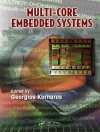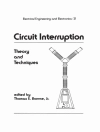Solar radiation data is important for a wide range of applications, e.g. in engineering, agriculture, health sector, and in many fields of the natural sciences. A few examples showing the diversity of applications may include: architecture and building design e.g. air conditioning and cooling systems; solar heating system design and use; solar power generation; weather and climate prediction models; evaporation and irrigation; calculation of water requirements for crops; monitoring plant growth and disease control; skin cancer research.
Solar radiation data must be provided in a variety of forms to suit these applications. The radiation reaching the upper atmosphere of the Earth is a quantity rather constant in time. But the radiation reaching some point on Earth surface is random in nature. The main cause is the fact that various gases within the atmosphere absorb solar radiation at different wavelengths, and clouds and dust also affect it.
There are two ways to obtaining solar radiation data at ground level: by measurement and by modelling. The book will facilitate the calculation of solar radiation required by engineers, designers and scientists and, as a result, will increase the access to needed solar radiation data.
Table of Content
Solar Radiation Measurement: Progress in Radiometry for Improved Modeling.- Fractal Classification of Typical Meteorological Days from Global Solar Irradiance: Application to Five Sites of Different Climates.- Modelling the Statistical Properties of Solar Radiation and Proposal of a Technique Based on Boltzmann Statistics.- A Method for Determining the Solar Global and Defining the Diffuse and Beam Irradiation on a Clear Day.- Recent Advances in the Relations between Bright Sunshine Hours and Solar Irradiation.- Solar Irradiation Estimation Methods from Sunshine and Cloud Cover Data.- Solar Irradiation via Air Temperature Data.- Models of Diffuse Solar Fraction.- Estimation of Surface Solar Radiation with Artificial Neural Networks.- Dynamic Behavior of Solar Radiation.- Time Series Modelling of Solar Radiation.- A new Procedure to Generate Solar Radiation Time Series from achine Learning Theory.- Use of Sunshine Number for Solar Irradiance Time Series Generation.- The Meteorological Radiation Model (MRM): Advancements and Applications.- Chain of Algorithms to Compute Hourly Radiation Data on Inclined Planes used in Meteonorm.- Modelling UV–B Irradiance in Canada.- Angular Distribution of Sky Diffuse Radiance and Luminance.- Solar Radiation Derived from Satellite Images.- Generation of Solar Radiation Maps from Long-Term Satellite Data.- Validation and Ranking Methodologies for Solar Radiation Models.












